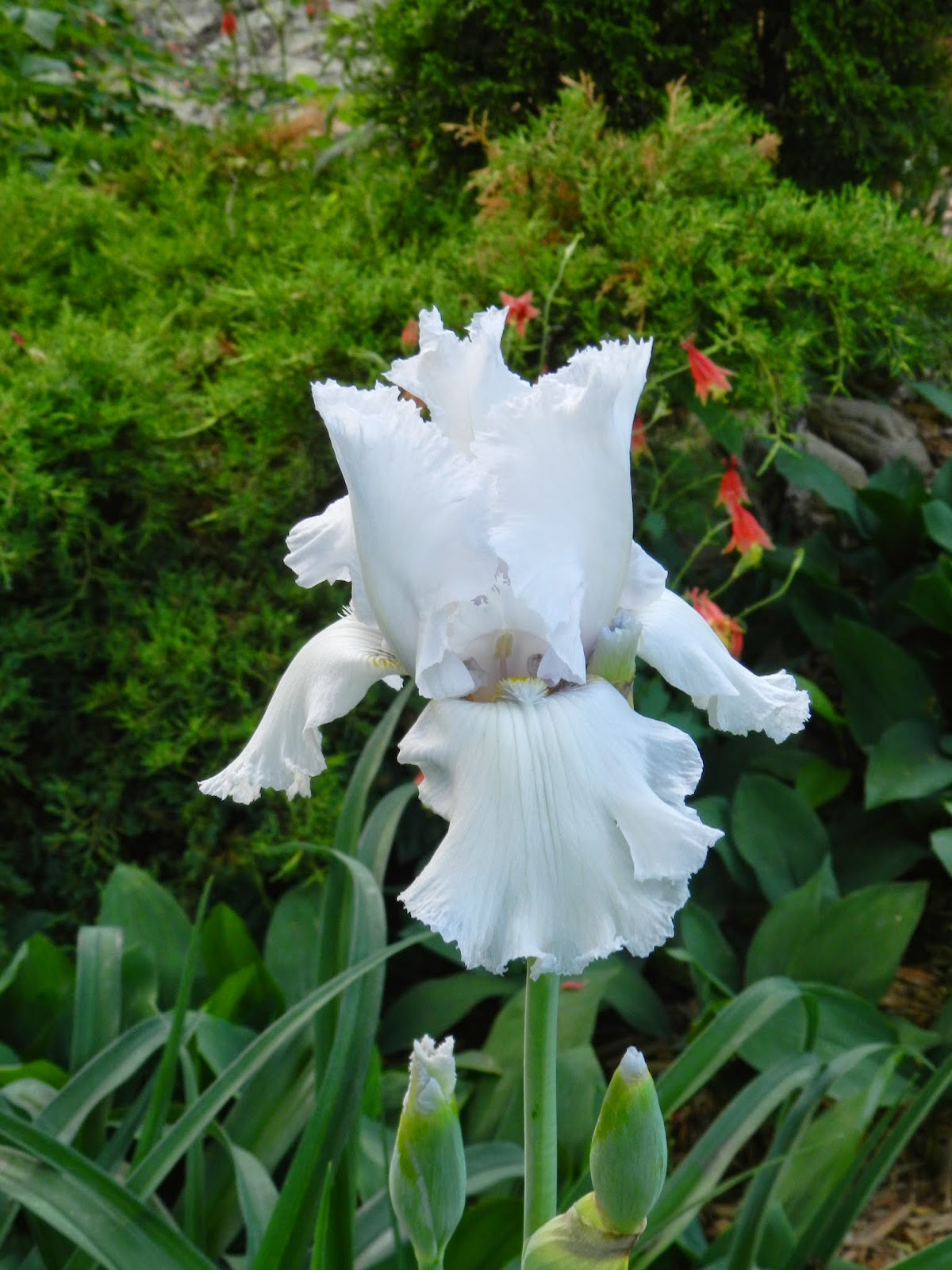Thunder has been gently rolling around the dark skies for about an hour and the weather alert has periodically cried it's "significant" storm and flood warnings.
I went outside early to take pictures; right after over an inch of rain dumped on the gardens. I thought I'd get the pictures of my daylilies done since thunderstorms are predicted for most of the day. Alas, yes, alas: The early morning bloomers were tattered and worn from the heavy winds/rain. The late bloomers were holding tight because the sunlight wasn't to their liking.
What to do? What to do? Trying a new recipe seemed a good idea.
A new recipe popped up on Facebook: Old Fashioned Oat Cakes from Rock Recipes (Barry C. Parsons) an on-line cooking blog. This sounds terrible healthy and it does have some good ingredients, but, it's never going to be included in any healthy eating cookbook. On the flip side, it's delicious.
I went outside early to take pictures; right after over an inch of rain dumped on the gardens. I thought I'd get the pictures of my daylilies done since thunderstorms are predicted for most of the day. Alas, yes, alas: The early morning bloomers were tattered and worn from the heavy winds/rain. The late bloomers were holding tight because the sunlight wasn't to their liking.
What to do? What to do? Trying a new recipe seemed a good idea.
A new recipe popped up on Facebook: Old Fashioned Oat Cakes from Rock Recipes (Barry C. Parsons) an on-line cooking blog. This sounds terrible healthy and it does have some good ingredients, but, it's never going to be included in any healthy eating cookbook. On the flip side, it's delicious.
Old Fashioned Oat Cakes
Preheat oven: 350 degrees - Makes 8-15 cakes (depending on size)
Sift together:
1 1/2 C - Flour
1/2 tsp. - Baking soda
1/2 tsp. - Cinnamon
1/2 tsp. - Ground nutmeg
1/4 C - Sugar
1/4 C - Brown sugar
Pinch - Salt
Rub in, cut in or pulse in a food processor:
3/4 C. - COLD butter - cubed
Toss in:
1 1/2 C - Large rolled oats
Optional: 1 C - dried fruit -or- chopped nuts -or- chocolate chips
Add:
1/2 C - Undiluted evaporated milk (NOT condensed milk)
Toss together with a wooden spoon until soft dough forms. Roll the dough on a lightly floured board to 1/2 inch thickness. Cut with 3 inch biscuit cutter or form with hands.
Place on a parchment lined cookie sheet. If the butter has become soft, put the cookie sheet/cookies into the freezer until the butter is again firm. Bake at 350 degrees for 18-20 minutes.
Mix:
1 1/2 C - sifted Confectioners Sugar
Evaporated Milk
2 T - Real Bakery orange flavoring
Add enough milk to make a thick syrup constancy. Add flavoring and drizzle over warm cakes.
Cool completely on wire rack. They will keep several days when stored in an airtight container.
I take the blame for the optional items; I used dried cranberries. I also added the icing. I mean if you have that much butter in ten cakes, a little icing isn't going to make or break your diet.
If you want healthier and less flavorful isn't an issue with you, experiment with:
Use a gluten free flour instead of wheat flour
Use frozen walnut oil instead of butter
Use molasses and/or honey instead of sugar (prob. needs less)
And forget the icing.
I haven't tried any of these because I'm OK with these little goodies being rich. Old recipes for oat cakes use lard and cream instead of butter and evaporated milk. They don't have additional "optional" items. The old fashioned was basically something to go in a pocket or lunchbox.
Top photo belongs to Barry - bottom (and less pretty example) photo is mine.
I liked the sweet and tart flavorings against the heavy oatmeal constancy. Wrap in waxed paper and tie with a string to transport. Don't allow them to absorb moisture or they fall apart.
Today isn't so much about gardening as what to do when I can't. Have a great and safe day.













.JPG)






.JPG)



.JPG)
